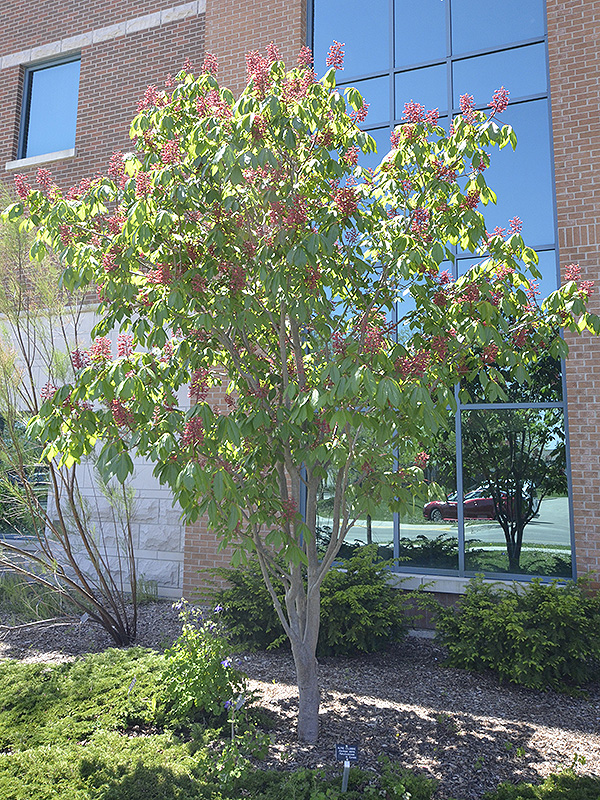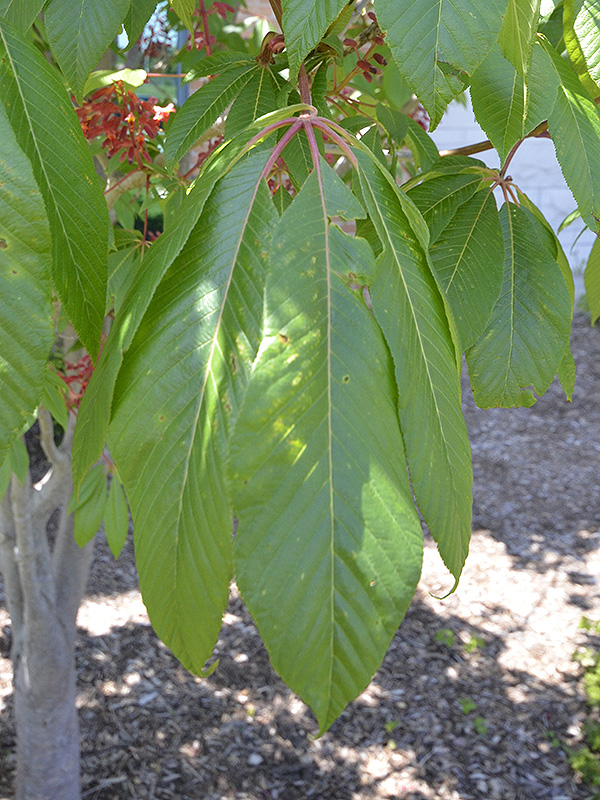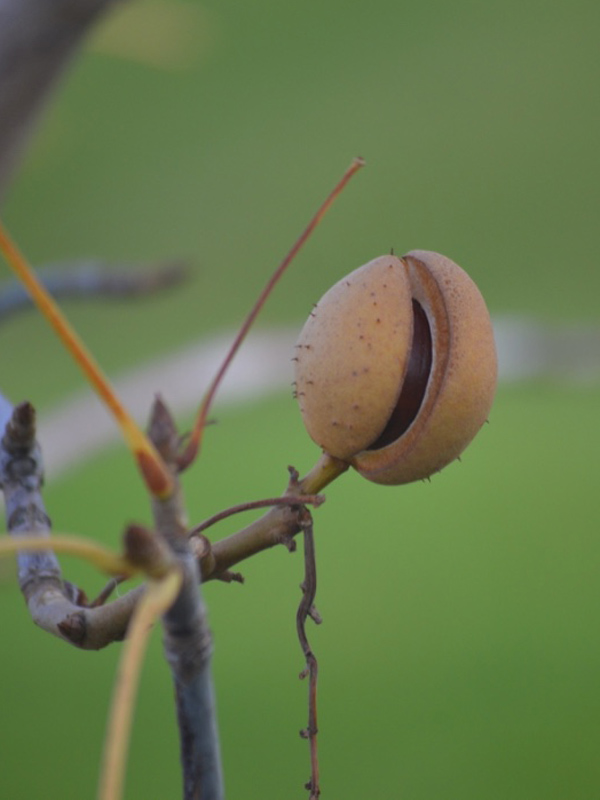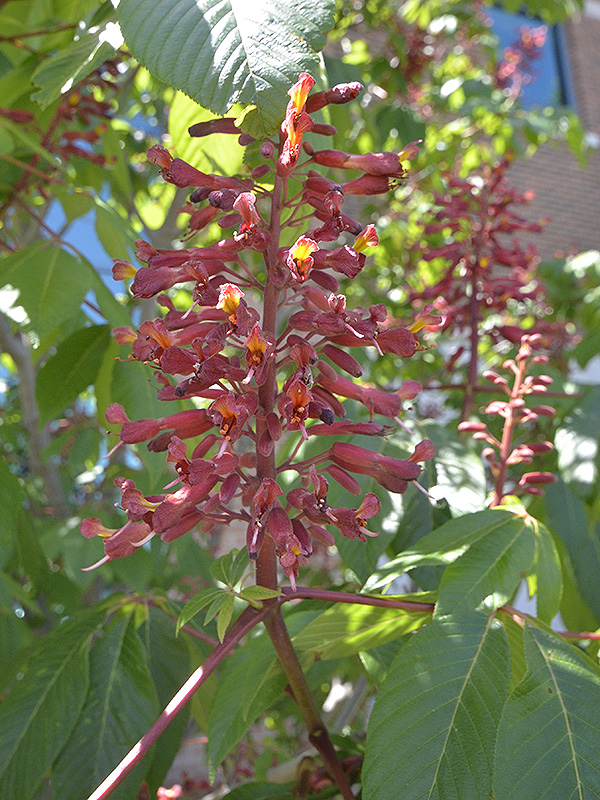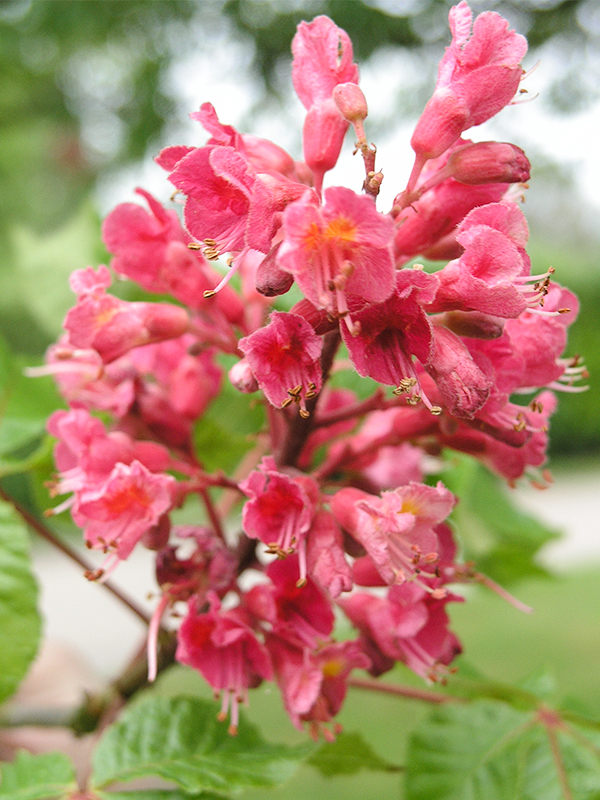
Woody > Aesculus > Aesculus pavia > Aesculus pavia
Aesculus pavia
Red Buckeye
Origin: North America.
Mike's
Opinion


"
Similar in initial character to A. x carnea but not as worthy a placement in the landscape. Flowers are interesting but after having experienced A. x carnea this is a poor substitute. The size may be its redeeming quality since where one wishes the attributes of A. x carnea but does not have the room, this is the second choice.
Michael Pascoe, NDP., ODH., CLT., MSc. (Plant Conservation)
"
| Family |
| Sapindaceae (Hippocastanaceae) |
| Genus |
| Aesculus |
| Species |
| pavia |
| Category |
| Woody |
| Type |
| Tree (deciduous) |
| Pronunciation |
| USDA Hardiness Zone |
| 5 - 8 |
| Canadian Hardiness Zone |
| 4 - 6a |
| RHS Hardiness Zone |
| H7 |
| Temperature (°C) |
| -20 |
| Temperature (°F) |
| 5 |
| Height |
| 9 - 12 m |
| Spread |
| 7 - 10 m |
Photographs
Description and Growing Information
Flowering Period
| Landscape |
| Landscape specimen. |
| Cultivation |
| Full sun and partial-shade. Well-drained and medium moisture soils. Prefers fertile soil. |
| Shape |
| Multi-stemmed tree, oval and round. |
| Growth |
| Medium |
| Pests |
| Leaf blotch can be a problem. Powdery mildew and leaf spots may occur. Bagworms, Japanese beetles and borers are troublesome. |
| Flower/Leaf Bud Description |
| Buds are quite pronounced, globose and scaled. |
| Leaf Description |
| Palmately compound leaves with 5 spreading ovate-oblong leaflets. Leaflets have doubly-toothed margins. |
| Flower Description |
| Showy flowers appear in upright terminal panicles that are 15 - 20 cm long. |
| Fruit Description |
| Prickly husky capsules that are 3 - 4 cm in diameter and contains 2 - 3 nuts. The nuts are poisonous. |
| Colour Description |
| The bark is a greyish-beige. The leaves are dark green. Panicle is bright red. The husk is green. |
| Texture Description |
| The bark is smooth when young and becomes coarse as it matures. The husk is smooth in texture. |
| Notable Specimens |
| The Gardens of Fanshawe College, London, Ontario, Canada. Wakehurst Place, Ardingly, Haywards Health, Sussex, England. |
| Propagation |
| Seeding. The seed germinates almost immediately and must be given protection so it is best to sow it immediately upon collection in a cold frame. The seed is recalcitrant and has limited viability and must not be allowed to dry out. It cannot be stored long term (greater than three months). |
